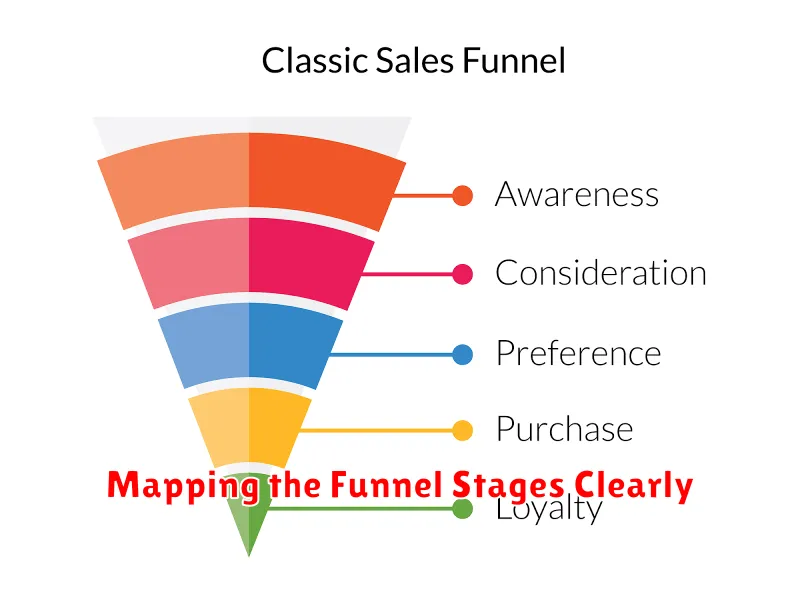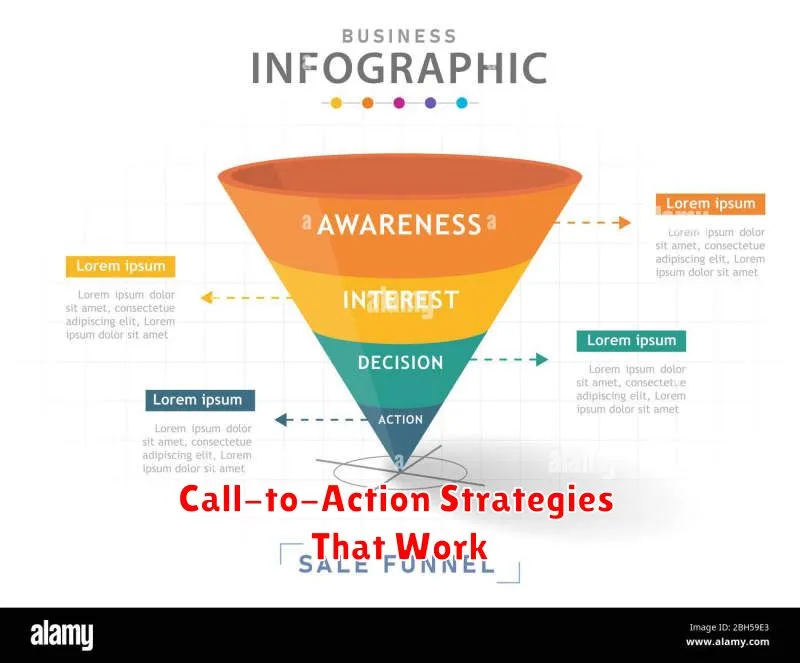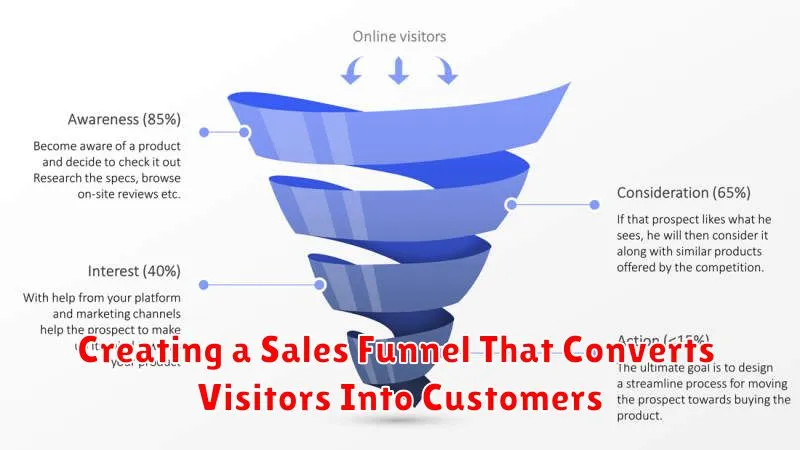Creating a high-converting sales funnel is crucial for any business aiming to transform website visitors into paying customers. This article provides a comprehensive guide to building a sales funnel that effectively nurtures leads and drives conversions. We’ll explore the key stages of a successful funnel, from attracting potential customers to closing deals and fostering customer loyalty. Understanding the intricacies of each stage and implementing the right strategies is essential for maximizing your return on investment (ROI) and achieving sustainable business growth. Whether you’re a seasoned marketer or just starting out, this guide will equip you with the knowledge and tools to create a sales funnel that converts.
From lead generation to customer acquisition, a well-structured sales funnel is the backbone of a thriving business. This article delves into the practical steps involved in crafting a sales funnel tailored to your specific business needs. We’ll cover essential topics such as defining your target audience, crafting compelling marketing messages, and choosing the right sales funnel software. By the end of this article, you’ll be empowered to build a powerful sales funnel that consistently converts visitors into customers and drives revenue growth.
Understanding the Sales Funnel Journey
The sales funnel visually represents the journey a potential customer takes from initial awareness to final purchase. It’s a crucial concept for businesses to understand as it helps streamline the sales process and maximize conversion rates. The funnel typically consists of several stages, each representing a different level of customer engagement. Awareness is the first stage where potential customers become aware of your product or service. Next is Interest, where they begin to actively learn more. This leads to Decision, where the customer evaluates available options and considers a purchase. Finally, Action is the final stage where the customer completes the purchase.
Understanding the sales funnel allows businesses to tailor their marketing and sales efforts to each specific stage. For example, during the Awareness stage, efforts should focus on brand building and reaching a wide audience. As customers move down the funnel, the approach becomes more targeted and personalized. By aligning your strategies with the customer’s journey, you can effectively nurture leads and improve the chances of conversion. Analyzing your sales funnel’s performance can also identify areas for improvement, like addressing bottlenecks or optimizing conversion rates between stages.
Optimizing each stage of the funnel is key to success. This involves understanding the customer’s needs and motivations at each point and providing relevant information and support. By continually evaluating and adjusting your approach, you can create a more effective sales process that leads to increased revenue and customer satisfaction.
Mapping the Funnel Stages Clearly

A clearly defined sales funnel is essential for successful marketing and sales strategies. It allows businesses to understand the customer journey, identify potential bottlenecks, and optimize their efforts at each stage. Typically, a sales funnel progresses through several key stages, from initial awareness to final purchase. By understanding these stages, businesses can tailor their messaging and offers to resonate with the customer’s needs and motivations at each point in the process.
Common sales funnel stages often include: Awareness (where potential customers become aware of a problem and potential solutions), Interest (where they begin researching and evaluating different options), Consideration (where they narrow down their choices and compare specific products or services), Intent (where they signal a strong desire to purchase), Evaluation (where they conduct final due diligence and negotiate terms), and Purchase (where the transaction is completed). Not all funnels will include all these stages, and some may have additional steps specific to the industry or business model.
Effectively mapping your sales funnel involves identifying the specific actions a customer takes at each stage, the metrics used to track progress, and the strategies employed to move them to the next stage. This might include analyzing website traffic, tracking lead generation forms, monitoring sales calls, and measuring conversion rates. By carefully analyzing this data, businesses can identify areas for improvement and optimize their sales funnel for maximum effectiveness.
Lead Generation Techniques
Lead generation is the process of attracting and converting strangers and prospects into someone who has indicated interest in your company’s product or service. Effective lead generation is crucial for business growth as it provides a consistent flow of potential customers. Several techniques can be employed to generate leads, each catering to different aspects of the sales funnel.
Content marketing plays a vital role in attracting potential customers organically. Creating valuable and engaging content such as blog posts, ebooks, and webinars establishes your company as a thought leader and attracts individuals interested in your industry. Search Engine Optimization (SEO) ensures your content is easily discoverable by potential leads. By optimizing your website and content for relevant keywords, you increase your visibility in search engine results pages (SERPs). Paid advertising campaigns, like those offered through Pay-Per-Click (PPC), can also effectively drive traffic to your website and generate leads. Social media platforms can also be leveraged to reach a wider audience and generate leads through organic engagement and targeted advertising.
Converting those leads into paying customers requires further engagement and nurturing. Email marketing campaigns, for instance, can be used to provide valuable information and build relationships with potential customers. Offering free trials or consultations can also incentivize leads to further engage with your product or service. Ultimately, a strong lead generation strategy requires a multi-faceted approach, utilizing a combination of techniques to attract, engage, and convert potential customers.
Engaging Content for Each Stage
Attracting potential customers requires content focused on raising awareness and generating interest. This stage prioritizes shareable and easily digestible content such as blog posts addressing common industry questions, engaging social media updates, and informative infographics. The goal is to establish your brand as a trusted resource and draw users further into your sales funnel.
Once interest is piqued, engaging content should nurture leads and build relationships. This stage offers valuable content like in-depth white papers, webinars providing expert insights, and case studies demonstrating successful implementations. By providing valuable solutions to potential customer challenges, you establish credibility and foster trust, moving them closer to a purchasing decision.
Delighting customers post-purchase is crucial for retention and advocacy. This stage utilizes content like personalized email newsletters with exclusive offers, product update announcements, and helpful tutorials. By continuing to provide ongoing value and support, you encourage repeat business and cultivate brand loyalty, turning satisfied customers into brand ambassadors.
Landing Page Optimization

Landing page optimization is the process of improving elements on a landing page to increase conversions. A high-converting landing page is crucial for any successful online marketing campaign, whether your goal is to generate leads, drive sales, or increase brand awareness. Key areas of focus include optimizing the page’s content, design, and technical performance.
Optimization efforts often involve A/B testing different versions of page elements such as headlines, call-to-actions, forms, and images. By analyzing the performance of these variations, you can identify what resonates best with your target audience and make data-driven decisions to maximize your conversion rate.
Key factors to consider when optimizing a landing page include: a clear and concise message that matches the ad or link that brought the visitor to the page; a compelling call to action that encourages visitors to take the desired action; a user-friendly design that is easy to navigate and visually appealing; and fast loading speed to ensure a positive user experience.
Email Sequences That Nurture
Nurturing email sequences are a series of automated emails designed to build relationships with prospects and customers over time. They provide valuable information, address pain points, and gently guide recipients towards a desired action, such as making a purchase or signing up for a service. Effective nurturing sequences are personalized and segmented, delivering the right message to the right person at the right time.
These sequences can be triggered by various actions, such as downloading a resource, signing up for a webinar, or abandoning a shopping cart. The content within the emails should be relevant and engaging, offering value beyond a simple sales pitch. Examples include educational resources, exclusive content, customer testimonials, and special offers. By providing consistent value, nurturing sequences build trust and establish your brand as a credible resource.
Key elements of a successful nurturing sequence include a clear objective, targeted segmentation, compelling content, and consistent delivery. Regularly analyzing and optimizing your sequences based on open rates, click-through rates, and conversions will ensure they remain effective in achieving your desired outcomes.
Call-to-Action Strategies That Work

Effective call-to-actions (CTAs) drive conversions and are crucial for any successful marketing campaign. A compelling CTA should be clear, concise, and create a sense of urgency. Use action-oriented language like “Get Started Today,” “Download Now,” or “Learn More.” The CTA should also be visually prominent, using contrasting colors and strategic placement to draw the user’s attention.
Tailoring your CTA to the specific audience and platform is essential. Understanding your audience’s needs and motivations will allow you to create a personalized CTA that resonates with them. For example, a CTA for a free trial might work well for a software product, while a discount code might be more effective for an e-commerce store. Consider the platform where your CTA is displayed, adjusting the language and design accordingly for websites, social media, or email campaigns.
Testing and optimizing your CTAs is an ongoing process. A/B testing different variations of your CTA, such as the wording, color, or placement, can help you identify what performs best. Continuously analyze the results and make adjustments to improve your conversion rates over time. Pay attention to click-through rates and other relevant metrics to gauge the effectiveness of your CTA strategy.
Using Retargeting to Re-Engage Leads
Retargeting is a powerful digital marketing strategy that allows you to reconnect with potential customers who have previously interacted with your website or brand. By displaying targeted ads to these individuals as they browse other websites, you can keep your brand top-of-mind and encourage them to return and complete a desired action, such as making a purchase or filling out a lead form. This is especially effective for users who have abandoned their shopping carts or viewed specific product pages, demonstrating initial interest but not converting into a sale.
Implementing retargeting involves using cookies to track website visitors. These cookies allow advertising platforms like Google Ads and social media networks to identify and target your previous visitors with relevant ads. This personalized approach is more effective than broader advertising campaigns, as it focuses on individuals who have already shown interest in your products or services. By strategically segmenting your audience based on their previous interactions, you can deliver highly targeted messages that resonate with their specific needs and interests.
The benefits of retargeting include increased brand awareness, higher conversion rates, and a better return on investment (ROI). By re-engaging warm leads, you’re more likely to convert them into paying customers, ultimately boosting your sales and revenue. Furthermore, retargeting campaigns are generally cost-effective because you’re focusing your advertising budget on a highly qualified audience.
Tracking Drop-Off Points
Tracking drop-off points in a user journey is crucial for identifying areas of friction and improving conversion rates. A drop-off point signifies where users abandon a process, whether it’s a purchase funnel, a form completion, or a multi-step registration. By pinpointing these points, businesses can analyze the reasons behind user abandonment and implement targeted strategies to optimize the user experience and encourage completion.
Several methods can be employed to track drop-off points effectively. Analytics platforms provide valuable insights into user behavior, allowing you to visualize the flow of traffic and identify areas with high exit rates. Session recordings can offer a more granular view of user interactions, highlighting specific pain points and usability issues. A/B testing can be utilized to experiment with different variations of a process and determine which version leads to improved completion rates.
Analyzing data from drop-off tracking allows businesses to make data-driven decisions about optimizing the user journey. This might involve simplifying forms, improving navigation, streamlining the checkout process, or providing clearer instructions. By addressing the root causes of user abandonment, businesses can improve conversion rates, enhance user satisfaction, and ultimately drive business growth.
Improving Funnel Conversion Rate
A sales funnel represents the journey a customer takes from initial awareness to final purchase. Improving your funnel’s conversion rate means getting more people to complete that journey. This requires a deep understanding of your target audience, their needs, and their pain points. Analyzing each stage of the funnel for drop-off points is crucial. Common areas of improvement include optimizing landing pages, simplifying forms, and providing clear calls to action.
Key strategies for boosting conversion rates include A/B testing different elements of your funnel, personalizing the user experience, and building trust with potential customers. Offering valuable content, testimonials, and guarantees can help address customer hesitations. Additionally, streamlining the checkout process, offering multiple payment options, and providing excellent customer service can significantly impact conversions.
Continuously monitoring and analyzing your funnel’s performance is essential. Track key metrics such as conversion rate, bounce rate, and time spent on each page. Use this data to identify areas for improvement and iterate on your strategy. By making data-driven decisions and focusing on providing a seamless and valuable customer experience, you can effectively improve your funnel conversion rate and drive business growth.

